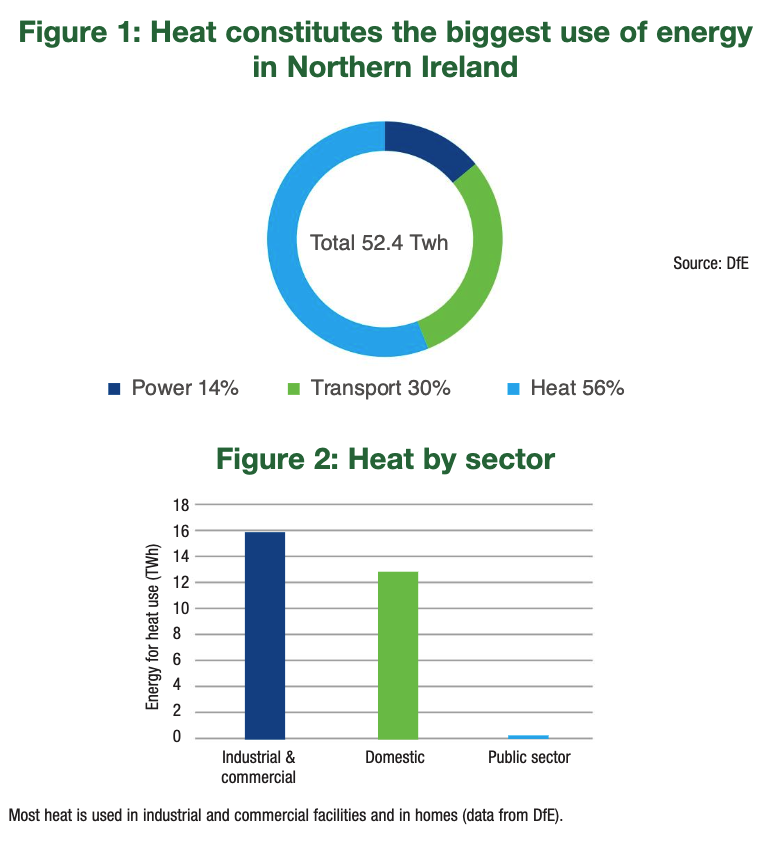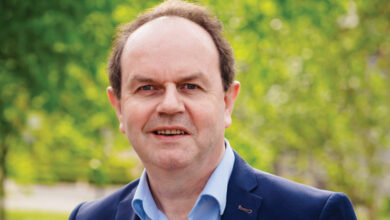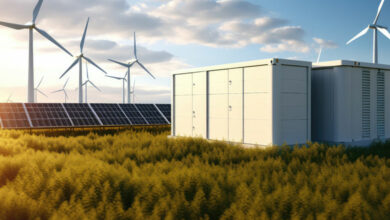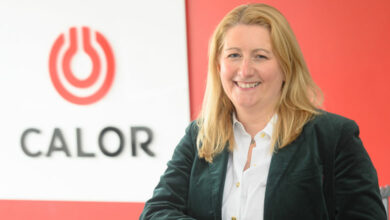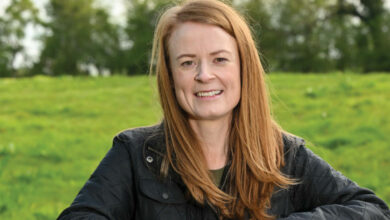Geothermal: A pathway to heat decarbonisation

Eighty per cent of heating in Northern Ireland can be done using heat pumps, with geothermal a key source and store of energy, writes Managing Director of Causeway Energies, Simon Todd.
Northern Ireland has big ambitions for its contribution to meeting the climate change challenge. With respect  to the final use of energy, it is heat that is the largest component of energy use (Figure 1) and it is this sector that so far is proving hardest to decarbonise. With no fossil energy supplies in Northern Ireland, decarbonisation has now become an imperative for energy security and energy poverty, as well as sustainability.
to the final use of energy, it is heat that is the largest component of energy use (Figure 1) and it is this sector that so far is proving hardest to decarbonise. With no fossil energy supplies in Northern Ireland, decarbonisation has now become an imperative for energy security and energy poverty, as well as sustainability.
Clean, local, always-on geothermal
Northern Ireland’s last volcanoes were active 55 million years ago, so we do not have hot geothermal resources from which we can generate clean electricity. Instead we have a very useful, and currently very underutilised, resource of heat in subsurface from 10m to 2km depth that can be economically and sustainably harnessed.
These rocks and contained brines are relatively low temperature compared to classic geothermal provinces like Iceland, but combined with electric heat pumps, this emission-free heat can be gathered and amplified to serve heating demands up to 150ºC and up to 10+ MWth scale.
What is more, while Northern Ireland is currently way behind in using geothermal and heat pumps, we can learn from the decades of experience elsewhere in places like Sweden, the Netherlands and the northern United States.
Heating (and cooling) public buildings
The public sector, including schools, hospitals, government and council buildings is the smallest sector in total, but is arguably the most important sector to decarbonise to provide “pioneer” leadership to others.
Of the public facilities in Northern Ireland, it is hospitals and schools that are the largest energy users. All these buildings, of whatever size, are serviceable by heat pumps to replace the current gas and oil fuel use. Hospitals sometimes have higher temperature demands for laundry and sterilisation of equipment, but this smaller load can now be dealt with high temperature industrial heat pumps that are coming on the market.
Causeway Energies completed a geothermal assessment of one of Northern Ireland’s largest hospitals last year. We found that at all the site’s ~8 MWth of heating could be provided by around four pairs or doublets of ‘open loop’ geothermal abstraction and reinjection boreholes. There are plans afoot for the hospital to start this year on its geothermal journey.
Schools are also ripe for geothermal heat pump solutions, from small primary schools in rural settings to large secondary schools in urban settings. Educational buildings also provide a wonderful opportunity to demonstrate to the pupils and their parents the potential and the benefits of low/zero carbon energy solutions including geothermal which even when deployed is often not known about because of its negligible surface footprint.
Warm homes
It is natural for the owners of fossil gas and oil networks and supply chain to seek opportunities to decarbonise their molecules. But if we consider our problem as an affordable and immediate decarbonisation of heat rather than gas, then electrification of heat using heat pumps becomes the obvious solution. This is even more pertinent for the majority of homes in Northern Ireland that have no connection to the gas grid but are of course connected to electrical power.
Air source heat pumps are often a good solution for homes, but because of the significantly greater efficiencies of their geothermal (or ‘ground source’) sisters, we believe that government and electricity networks should be promoting community heat networks and geothermal, aquathermal (rivers, lakes) and solar thermal sources. The lure of lower capital costs of air source systems compared to geothermal must be balanced with considerations of gross and peak demands of electricity from the regional grid which is already forecasted to be declining in resilience over the next few years.
“Providing a low/zero carbon energy system, electrical (power) and thermal (heat and cold) to our economy will be critical to attracting foreign investment in Northern Ireland’s economy.”
Green economy
Industry and commerce are the biggest users of heat (and cooling) in Northern Ireland. Although we do not have granular data by manufacturing sector in Northern Ireland, comparison with Ireland where there is such data, indicates more than 40 per cent of thermal energy demand is less than
150ºC. Hence at least 40 per cent of heat use in commerce and industry is within the scope of heat pumps.
Causeway Energies is focused on applying heat pump technology applications on these demands, as well as the other sectors discussed above. As we engage with clients in assessments, we are finding that we can directly substitute for fossil fuels using heat pumps. These solutions are cost competitive with gas and are financially superior if the avoided emissions can be monetised. We are also identifying major opportunities for efficiency and energy demand reduction. For example, we have proposed a design concept to several clients in which surplus heat (particularly in the summer) can be stored underground in the geothermal resource for recovery and use in the winter.
Providing a low/zero carbon energy system, electrical (power) and thermal (heat and cold) to our economy will be critical to attracting foreign investment in Northern Ireland’s economy. While we have strong suits in the development of future tech in Northern Ireland which we must continue to support, there is so much we can do now, with proven or nearly commercial technology.
| Our mission at Causeway Energies is focused on the decarbonisation of larger demand heating (and cooling) in the sectors described in this article. We are building a portfolio of clients in the commercial, industrial, public and heat network sectors in the UK, Ireland and elsewhere. We are also developing leading edge technologies to improve the bandwidth, efficiency and cost effectiveness of geothermal + heat pump applications.
E:contact@causewaygt.com • W: www.causewaygt.com |

